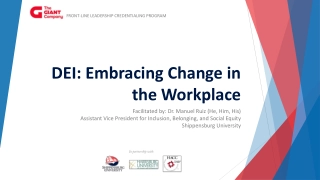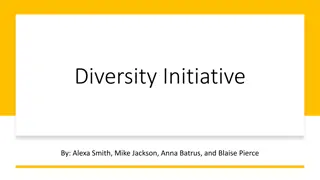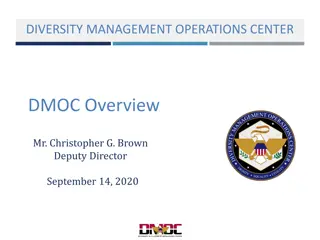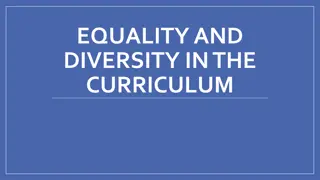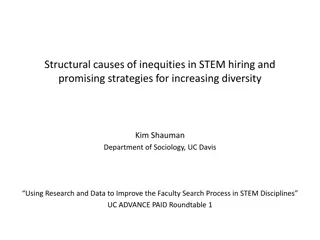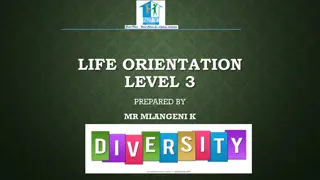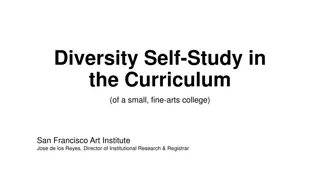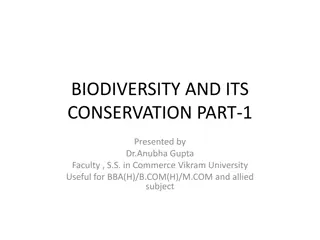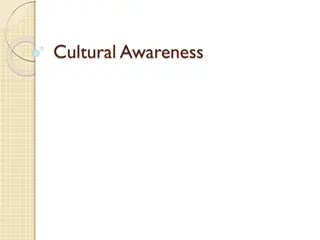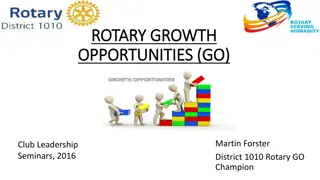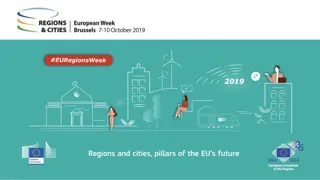Embracing Diversity in Science: Opportunities and Challenges
Diversity is crucial in science for varied perspectives, interpretations, and tools leading to breakthroughs. Future scientists must be drawn from a diverse talent pool. However, there's a problem in underutilizing diverse talent in the scientific workforce. Initiatives like Purdue University's strategies aim to promote diversity and excellence in science, reflecting the nation's diversity. Strategies include targeted opportunities to enhance diversity among faculty, staff, and students.
Download Presentation

Please find below an Image/Link to download the presentation.
The content on the website is provided AS IS for your information and personal use only. It may not be sold, licensed, or shared on other websites without obtaining consent from the author.If you encounter any issues during the download, it is possible that the publisher has removed the file from their server.
You are allowed to download the files provided on this website for personal or commercial use, subject to the condition that they are used lawfully. All files are the property of their respective owners.
The content on the website is provided AS IS for your information and personal use only. It may not be sold, licensed, or shared on other websites without obtaining consent from the author.
E N D
Presentation Transcript
Diversity in science is essential Two reasons and a problem
1. Diversity benefits science. Diversity is a property of a group. Science depends on groups. Diversity adds: (i) perspective, (ii) interpretation, (iii) tools. Scientific breakthrough often results from a different approach, a different interpretation, and/or a different set of tools. Diversity trumps homogeneity and ability when: (i) hard problem, (ii) multiple ways to look at the problem; (iii) large set of problem-solvers - Scott Page, The Difference, 2007, Princeton University Press
2. Future scientists from a diverse talent pool. Persons, in millions 250.00 non-Hispanic White Majority Minority U.S. population - 2042 U.S. 18 yrs and younger - 2018 200.00 150.00 100.00 50.00 0.00 2010 2050
Problem: We fail to take advantage of the diverse talent pool Scientific workforce U.S. talent pool 9 % URM 29 % URM White + Asian URM NSF data for 2006, from Expanding Underrepresented Minority Participation, National Academies, 2011.
Undergraduate persistence in science
Persistence of undergrad STEM aspirants 45 40 35 30 25 20 15 10 5 0 Data from Higher Education Research Institute, UCLA 5-year completion of 2004 STEM aspirants
Purdue University Strategies and Numbers
The College of Science will engage its entire membership in promoting the shared responsibility for diversity so that we can build a community of excellence within the college that reflects the diversity of Indiana and the nation and where underrepresented groups achieve a self-sustaining critical mass of faculty, students, and staff with opportunities for growth and professional success. Insight, Innovation, Impact The College of Science 2008-2014 Strategic Plan
Strategies 21. Targeted opportunities to increase the diversity of our faculty, staff, and students 22. Written departmental plans for achieving diversity .climate issues must be addressed in these plans . 23. Leadership training and leadership opportunities . 24. Institutionalize diversity .
increase.plans.climate. training .institutionalize Numbers and competencies
Numbers: baseline US Indiana Purdue 29% URMs 15.2% URMs 6.8% URMs
Numbers: URM persistence in science Purdue Nation 35% 9.00% 30% 8.00% 25% 7.00% 6.00% 20% 5.00% 15% 4.00% 10% 3.00% 2.00% 5% 1.00% 0% 0.00%
Numbers: URM persistence in selected Purdue STEM courses 12 10 8 Intro 6 Advanced 4 2 0 Biology Biochemistry Biomed Engineering
23. Leadership training and leadership opportunities . Competencies Learn to talk about difference
From commitment to progress Specific goals owned by all Know your baseline numbers Measure progress toward goals
This strategic plan is our roadmap for excellence and affirms our determination to retain our top ranking as one of the premier scientific hubs in the world. Insight, Innovation, Impact Purdue College of Science Strategic Plan 2008-2014
Fraction who are Underrepresented Minorities (%)Undergraduate years are critical 30 25 20 15 10 5 0 US population undergrads science science baccalaureates PhDs NSF WEBCASPAR (2000-05)
Persistence of undergrad STEM aspirants 50 45 40 35 30 Whites + Asians 25 URMs 20 15 10 5 0 Complete Persist Switch Drop out G. Huang et al., 2000, Entry and persistence of women and minorities in college science and engineering education, US. Dept. Education, National Center for Education Statistics
21. Targeted opportunities to increase the diversity of our faculty, staff, and students ..
22. Written departmental plans for achieving diversity .climate issues must be addressed in these plans .



